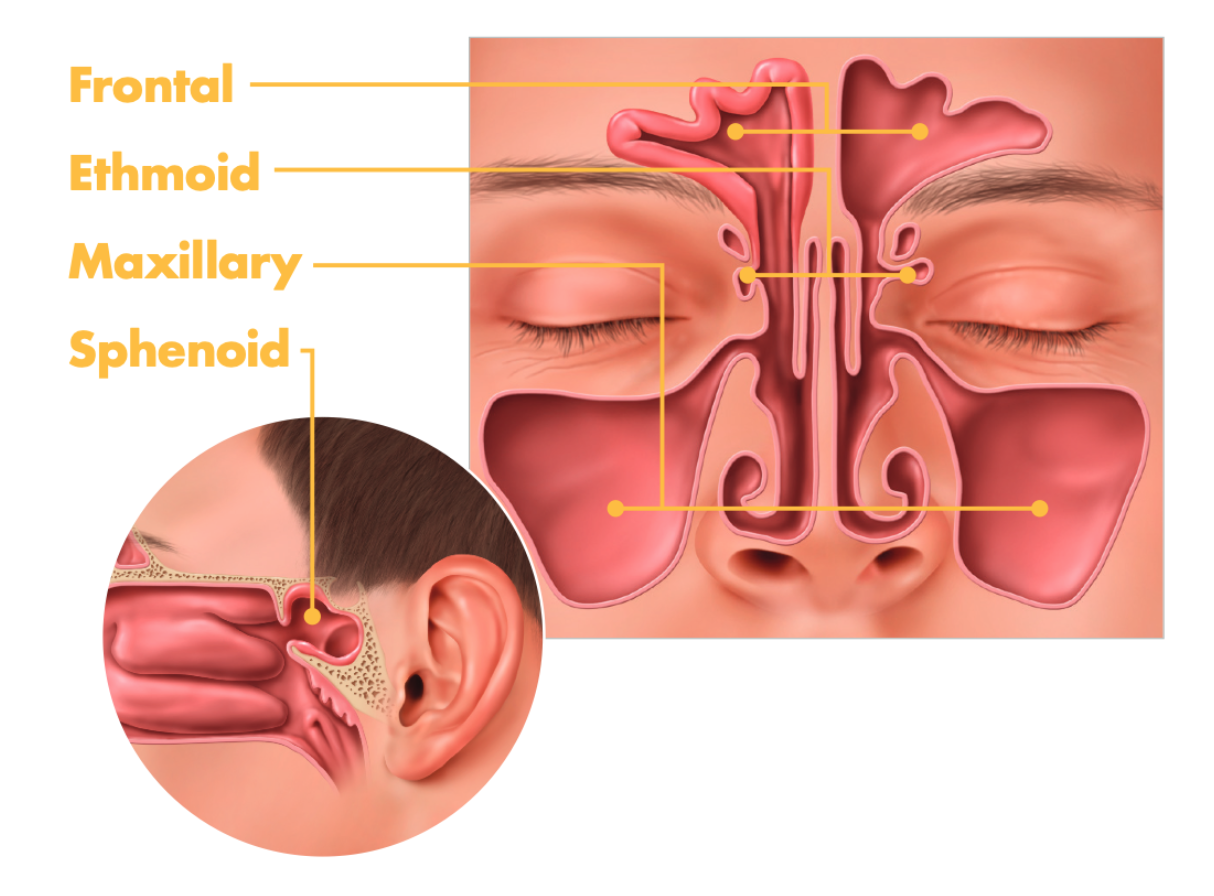Balloon Sinuplasty
Dr. Mock is a regional expert in the treatment of chronic sinusitis with the Balloon Sinuplasty Procedure. Through this minimally-invasive procedure he is able to provide lasting relief to patients in the Dallas area without the need for an invasive surgical procedure.
Balloon Sinuplasty Procedure Overview:
The Balloon Sinuplasty procedure is quickly becoming the standard of care for the treatment of Chronic Sinusitis. During a Balloon Sinuplasty a tiny device is inserted into the small openings in the sinuses, called ostia. These openings are the natural mucus drainage pathway, which are sometimes closed off due to chronic inflammation. When the balloon device is inflated in the sinus ostia natural drainage can be permanently restored.
What is Sinusitis?
Sinusitis simply means disease of the sinus. Sinusitis occurs when the natural openings, called ostia, become closed off due to inflammation. The ostia are essential to the clearing and drainage of mucus from the sinuses. If mucus is not allowed to drain from the sinus frequent infections can occur.
How does balloon sinus dilation
provide lasting relief?

Blocked sinus pathways create pressure and cause sinusitis.

The bony sinus outflow tracts are remodeled by balloon displacement of adjacent bone and paranasal sinus structures.

Open nasal pathways restore drainage and allow for fewer infections and clearer breathing!
Why choose balloon sinuplasty?
Who benefits from Balloon Sinuplasty?
Balloon dilation devices are indicated to access and treat the maxillary ostia / ethmoid infundibula patients as young as 2 years old and the frontal ostia / recesses and sphenoid sinus ostia in patients 12 years and older.
In addition to sinus dilations, balloon dilation devices are indicated to dilate the cartilaginous portion of the Eustachian tube for treating persistent Eustachian tube dysfunction in patients 18 years and older using a transnasal approach.
How does Balloon Sinuplasty compare with Functional Endoscopic Sinus Surgery (FESS)?
Functional Endoscopic Sinus Surgery, aka FESS, is the traditional method of opening the sinus drainage pathways for the treatment of sinusitis through invasive bone and tissue removal. Because bone and tissue are removed, FESS typically involves more blood loss, longer recovery and return to work.
How is Balloon Sinuplasty performed?
Your doctor will insert a small balloon and inflate the balloon for approximately five seconds to open the sinus pathway and restore drainage. Once the pathway is opened, your doctor will deflate the balloon and remove the device. Nothing stays in your nose. Your doctor may treat more than one sinus during your procedure.
Tips to help you during your Balloon Sinus Dilation procedure:
- When your physician inflates the balloon you may feel some pressure but not pain.
- During the inflation of the balloon you may hear some popping and crackling. This is completely normal and is a result of the remodeling process.
- Every patient’s anatomy is unique. Make sure to ask your doctor what you should expect during your balloon sinuplasty procedure.
What can you expect during a
Balloon Sinus Dilation?
Typically the anesthesia portion of the procedure takes the most time. Your physician will determine the best way to numb the inside of your nose.
Your physician may:
- Spray the inside of your nose with numbing medicine and decongestant.
- Place small pieces of cotton (pledgets) soaked in numbing medicine and decongestant inside of your nose. These small pieces of cotton should not affect your ability to breathe through your nose.
- Use a tiny needle to inject small amounts of numbing medicine in some key locations inside your nose. Because of the numbing medicine on the cotton pieces, these injections should not hurt.
What happens after a Balloon Sinuplasty procedure?
Many patients return to normal activity the day of the procedure. Your doctor may recommend that you refrain from vigorous physical activity for a period of time following the procedure.
Tips to help you immediately following your Balloon Sinus Dilation:
- Following the procedure you may experience difficulty swallowing and numbness in your throat due to the anesthesia medication. This is normal and usually resolves completely in a few hours.
- You may experience light nosebleeds up to a few days following your procedure.
What are the potential complications and risk factors of Balloon Sinuplasty?
Although the balloon sinus dilation procedure has been proven to be safe and effective, all procedures involve some amount of risk. It is important to review these risks as well as any other medical conditions that may impact the outcomes of your balloon sinus procedure.
Presley M. Mock, MD
Dr. Presley Mock is board certified in otolaryngology—head and neck surgery and is a Fellow of the American College of Surgeons. His office is located on the Presbyterian Hospital of Dallas campus, where he has served patients for 25 years. His practice encompasses pediatric ENT, sinus and nasal surgery, sleep apnea management, hearing and balance disorders, head and neck oncology, and care for the professional voice. His interests include the full spectrum of sinus surgery, from in-office minimally invasive procedures to complex revision surgery with intraoperative image- guided navigation. He also has a passion for treating voice patients and has helped student, amateur, and professional singers and speakers with their medical and surgical voice care.

